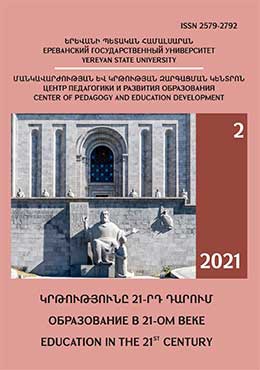KEY PERFORMANCE INDICATORS AS A MECHANISM FOSTERING IMPROVEMENT OF HUMAN RESOURCE PERFORMANCE APPRAISAL AT HIGHER EDUCATION INSTITUTIONS
DOI:
https://doi.org/10.46991/educ-21st-century.v2i6.10909Keywords:
Keywords: Key Performance Indicators (KPIs), higher education institutions, human resources, human resource management, performance appraisal, strategic management of higher education institutions.Abstract
In the current conditions of aggravated socio-economic problems and intensive competitive market the higher education institutions (HEI) are challenged to regularly review their management policies, including Human Resource Management (HRM) practices and strategic HRM approaches to ensure their viability and competitiveness in the sphere of higher education. In order to minimize the negative impact of external factors and to ensure the sustainable efficiency of their activities, HEIs should also review the mechanisms through which they evaluate the effectiveness of their HR performance. This will allow the HEIs to not only identify the urgent problems but also to ensure that they are still functional and competitive. Key Performance Indicators (KPIs) are one of the most effective mechanisms used in HR performance appraisal processes. As an evaluation mechanism, KPIs may serve as a guide to HEIs to improve their HR performance appraisal processes and to clearly visualize to what extent they have succeeded in addressing crucial issues.
Based on the above mentioned, the current article elaborates on the essence of KPIs, puts forwards some examples of HR KPIs and proposes some questions through which HEIs can define, re-develop and improve their HR KPIs as well as reform the evaluation of HR performance.
References
Խաչատրյան Ռ., Բարձրագույն ուսումնական հաստատությունների կատարողականի չափման և գնահատման առանձնահատկությունները, «Բանբեր Երևանի Վ. Բրյուսովի անվան պետական լեզվահասարակագիտական համալսարանի. Մանկավարժություն և հասարակական գիտություններ», Երևան, «Լինգվա», 2015, 2(33), էջեր 59-74:
Վարդանյան Գ., Գիտելիքահենք տնտեսություն, Երևան, ՀՀ ԳԱԱ «Գիտություն» հրատարակչություն, 2008:
Chao M. & Chuan Ch. M. (2007). Developing Key Performance Indicators and Productivity/Performance Benchmarks for Performance-Based Remuneration Systems in Chinese Taipei. APEC Secretariat, National Productivity Corporation.
Eckerson W. (2009). Performance Management Strategies. How to Create and Deploy Effective Metrics. TDWI Best Practices Report. The Data Warehousing Institute.
Franceschini F., Galetto M., & Maisano D. (2019). Designing Performance Measurement Systems. Theory and Practice of Key Performance Indicators. Management for Professionals. Springer, Nature Switzerland AG.
Griffin, J. (2004). Developing Strategic KPIs for your BPM System. DM Review, 14 (10), 70.
Paauwe J. (2009). HRM and Performance: Achievements, Methodological Issues and Prospects. Journal of Management Studies 46:1. Tilburg University/Erasmus University, Blackwell Publishing Ltd, UK & USA.
Parmenter, D. (2007). Key Performance Indicators: Developing, Implementing, and Using Winning KPIs. Hoboken, NJ: John Wiley & Sons, Inc. 9. Wang X. (2010). Performance Measurement in Universities. Managerial Perspective. Center for Higher Education Policy Studies. University of Twente, Enschede, the Netherlands.
Downloads
Published
How to Cite
Issue
Section
License

This work is licensed under a Creative Commons Attribution-NonCommercial 4.0 International License.

